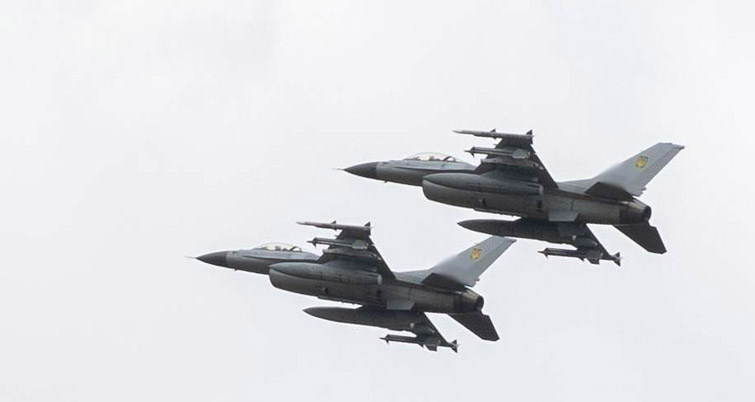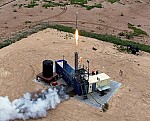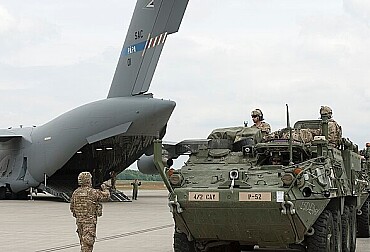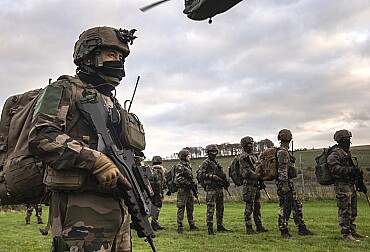Europe becomes the key provider of the military aid to Ukraine
Thanks to an acceleration in arms contracts and a stronger political commitment, Europe has now overtaken the US in terms of total military aid to Ukraine. This is an unprecedented strategic shift since the start of the conflict.
On August 12, 2025, the Kiel Institute for the World Economy published new data confirming that the European Union (EU) has provided €80.5 billion in military aid to Ukraine since February 2022, compared to €64.6 billion for the United States. This milestone marks a significant shift in international support, as the conflict, now in its fourth year, requires unprecedented industrial and financial mobilization.

Europe takes the lead in military efforts
The Kiel Institute's Ukraine Support Tracker, a global benchmark for monitoring aid, highlights a steady increase in European commitment. Between May and June 2025, EU member states committed an additional €10.5 billion, including €4.6 billion in production contracts with their defense industry. According to the report, “Europe is now the largest military contributor to Ukraine.” This leadership is explained by the increase in industrial orders, which not only equip Kiev but also replenish European stocks.
Recent major contributions include:
- Germany: €5 billion
- Norway: €1.5 billion
- Belgium: €1.2 billion
- The Netherlands, the United Kingdom, and Denmark: between €500 million and €600 million each
Under Trump’s administration, the United States is in relative retreat
In absolute terms, the US commitment remains massive, but its composition is changing. Recent aid is increasingly taking the form of arms sales that Ukraine must finance, automatically reducing the amount recorded as direct donations. The Kiel Institute notes that European industrial contracts total €35.1 billion, €4.4 billion more than their US counterparts. This dynamic illustrates Europe's adaptation to a context in which Washington is focusing on its own industrial capacity and reorienting its strategic priorities.
Coordinated industrial ramp-up
European support is not limited to the delivery of equipment. It is based on an integrated industrial strategy, with increased production of ammunition, ground-to-air systems, and reconnaissance drones. Since Donald Trump’s inauguration in January 2025, European countries have continued to provide military aid to Ukraine, with some stepping up contributions amid fluctuations in U.S. support. Precise details on aid packages may vary due to strategic ambiguity or incomplete public reporting, and some commitments may extend beyond immediate deliveries.
The UK has taken a leadership role in supporting Ukraine, particularly in coordinating the Ukraine Defence Contact Group alongside Germany since 2025. The UK has maintained unwavering support for Ukraine, stepping up its role in the Ukraine Defence Contact Group after the U.S. reduced its role under Trump. It continues to prioritize innovative financing and joint production.
Germany has remained one of Ukraine’s largest military aid providers, second only to the United States historically, with a focus on both direct equipment deliveries and financial support for procurement. Despite plans to halve military aid in 2025 (from €7.1 billion in 2024 to €4 billion initially), Germany increased its commitment through a €3 billion package, reflecting concerns over reduced U.S. support under Trump. However, political disputes within Germany have stalled some funding decisions.
In France, the Ministry of the Armed Forces emphasizes that recent deliveries include ground-to-air defense batteries, drones, and artillery ammunition, complemented by training efforts: 26,000 Ukrainian soldiers have been trained by the EUMAM mission since 2022, including 6,000 by France. The ERA loan mechanism, financed by €45 billion from frozen Russian assets, complements the financial arsenal by providing direct budgetary support to Kyiv.
Italy’s contributions to Ukraine since January 2025 are less detailed in available sources, as Italy tends to provide aid discreetly and often through multilateral frameworks like the EU or NATO. Italy’s military aid is less prominent than Germany’s or the UK’s, but it remains a consistent supporter through multilateral channels. The lack of specific 2025 data suggests Italy’s contributions may be embedded in broader EU or NATO efforts.
The Netherlands has been a significant contributor, particularly in air defense and aviation support, often collaborating with Nordic countries and Germany. The Netherlands has been proactive in coordinating aid through NATO and has increased its contributions in 2025 to offset reduced U.S. support, focusing on high-impact systems like F-16s and air defenses.
Denmark has been a leading per-capita donor to Ukraine, with significant contributions relative to its size, often in collaboration with Nordic neighbors. Denmark’s high per-capita aid reflects its strong commitment to Ukraine, with a focus on sustainable support through industrial partnerships and NATO coordination.
Sweden has also increased its military aid to Ukraine, aligning with Nordic neighbors and focusing on air defense and ammunition. Sweden’s contributions are significant for its size, and its collaboration with Denmark and Norway strengthens Nordic support for Ukraine, particularly in response to U.S. aid pauses under Trump.
Much of the aid is channeled through NATO, the EU, or the International Fund for Ukraine, making it challenging to isolate bilateral contributions.
A strong political signal ahead of international talks
The publication of the Kiel Institute's figures coincides with a joint statement signed by 26 EU member states (all except Hungary), reaffirming their political, military, and economic support for Ukraine on the eve of talks with the US and Russia in Alaska. According to Taro Nishikawa, project coordinator at the Kiel Institute, “The growing role of industrial capacity is essential to ensure that promises are translated into actual deliveries.”
Europe now takes the lead in military support for Ukraine
This handover from Washington to Brussels in the field of military aid marks a strategic turning point. Europe, long perceived as holding back, is now taking on a leading role in defending Ukraine, combining financial support, industrial reinforcement, and political cohesion. The coming months will tell whether this lead will be maintained in the face of industrial and budgetary realities on both sides of the Atlantic.








